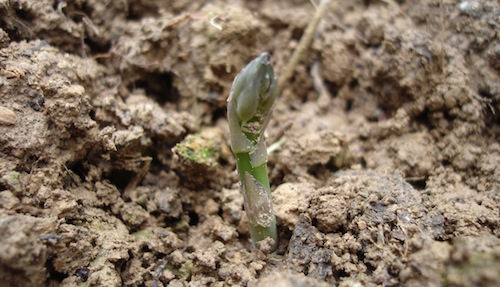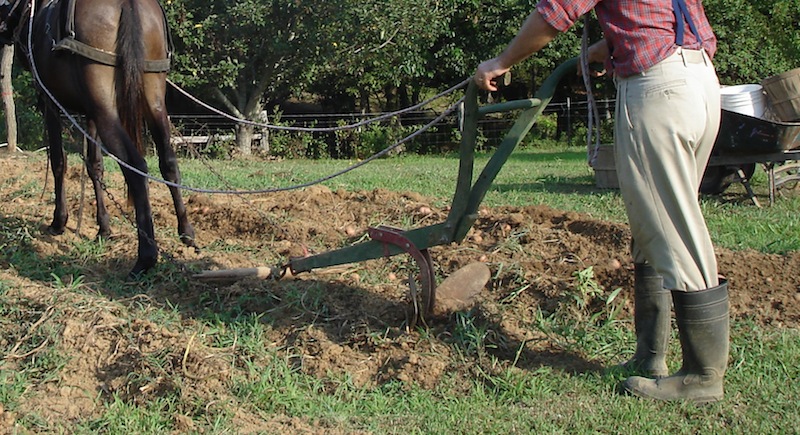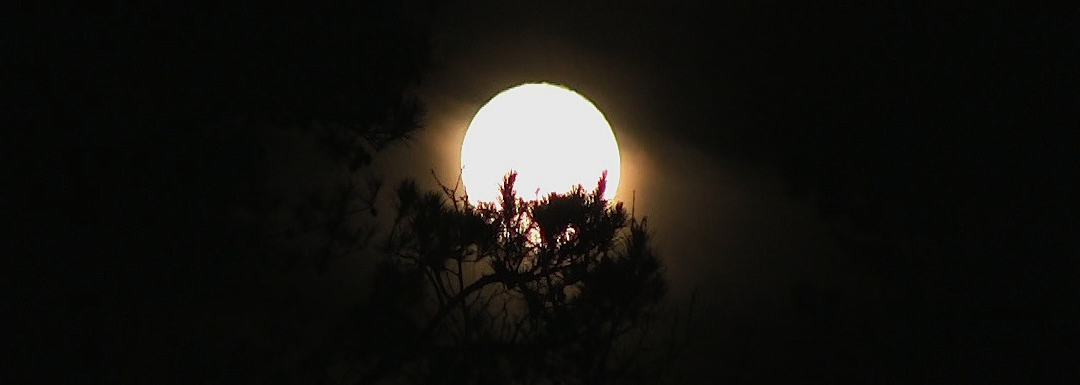The Lunar Cycles Effects on Gardening
In my last post called “Farming by the Moon Phases…Made Simple”, I mentioned many of the diverse aspects of farm life that are affected by the lunar phases. In this little monograph, I’ll be more detailed as to the moon’s effects on gardening in particular.

So how does the moon affect our plowing, planting, cultivating, and harvesting of plants and vegetables? Well that’s a good question, but just as it is with farming, “how” it affects gardening is not as useful as “how can we use what it effects?” Just like the ocean tides going in and out, there are some observable things that happen to the ground and our plants at the same relative time we see the moon in one phase or another.
Now we covered the basics of the moons phases in my previous post on farming by the moon phases in the Country Ways section of the website. But in case you missed it, I’ll go over just the lunar cycle part again briefly. If you didn’t miss it, skip on down just a little.
The cycle of the moon’s revolution around us here on earth can be divided into 4 distinct phases or “quarters”, each of which lasts a little better than 7 days…and each of which has a different appearance as viewed from earth.
The 1st quarter starts at the point called the “new moon” in which the moon is practically invisible to us and continues to that point in which half the moon is illuminated by the sun.
The 2nd quarter then begins and lasts for about another 7 days until the full moon is reached. Now we’re halfway through the lunar month (or cycle). This entire 1st half of the cycle (about 14 days) is also known as the “waxing of the moon” or the “light of the moon” among other things.
The 2nd half of the lunar cycle begins with the 3rd quarter that takes place from the full moon to that point when the sun shines on exactly the other half of the moon. At this point begins the 4th quarter, that lasts until the new moon (which is where the cycle began). This last half of the lunar cycle (the 3rd and 4th quarter) also has names: The “waning of the moon”, the “decrease of the moon”, the “dark of the moon”, or the “old of the moon”.
During the waxing of the moon (that is, the increasing light of the 1st half of the lunar cycle, or the 1st and 2nd quarters), there’s more energy exerted by the moon upon the earth; a better term for it would be expansion. It can be thought of as a “growth” season, where material in nature (probably mainly water or moisture) grows or expands. The opposite is true for the waning of the moon (the 2nd half of the cycle, or 3rd and 4th quarters), where a period of contracting occurs.
And now the fun part. How does all this affect your garden or crops?

Consider two things that most likely have great bearing on the matter: 1) The key ingredient of good soil and of any type of plant, tree, or shrub…is water, and 2) A logical assumption that (somehow) the moon’s gravitational pull somehow causes moisture to stay closer to the surface of the ground during a waxing moon.

The general rule that farmers since ancient times have lived by is this: All plants producing above ground growth, fruits, or flowers benefit from a waxing moon planting. Those plants that make their seed outside the fruit during the 1st quarter and those that make seed inside the fruit during the 2nd quarter (cucumbers being the only exception to this rule for some reason). All plants that produce below ground generally benefit from a waning moon planting, leaning more heavily on the 3rd quarter. Fruit trees would also be best planted during the 3rd quarter even though they produce their fruit above the ground. I suppose this would be to give the root system the advantage over the long haul. This also applies to plants that continue to produce from the same rootstock like berries or strawberries. Any 4th quarter (just before the new moon) in late winter might be a good time for pruning fruit trees. The “surgical” removal of limbs at this time when growth is at its lowest ebb is least harmful to the patient.
For the transplanting of plants, there seems to be a difference of opinion between many folks. Some say the same basic rule applies: Above ground producing plants benefit from a waxing moon transplanting while below ground producers benefit from the waning moon. Others say the best time for all transplanting would be the 4th quarter since it’s a time of decreased activity or resting which would give transplanted plants a time to settle in. I would probably lean toward this latter notion.
As for fertilizing (chiefly the use of manures or compost tea), the waxing moon would be good for side dressing of plants designed as an instant boost. The waning moon would be best for manure applications intent on building long-term soil quality by breaking down its components in a way that benefits future plants.

The 3rd quarter is best for planting things that continue to produce from the same rootstock like perennials (berries, strawberries, etc.) and asparagus like this
And speaking of the soil, the lunar calendar can help in both preparing the ground for planting as well as in maintaining it as the plants grow. Plowing ground (or digging of any kind) is best done during the time the dirt is most loose during expansion (under a waxing moon). Contrast that with a waning moon, under which cultivation should ideally be done. This is because the chief aim in cultivation lies not in bettering the dirt (by stirring it deeply), but in disrupting weeds through a shallow scratching of the soil (so as not to disturb the crops).
Well, what about the harvesting of fruits, grain, vegetables, or forage? It makes sense that this ending of growth would be best done on a waning moon (the conclusion of the moon’s energy pull on the earth). It’s even been said that apples with slight bruising picked on the dark of the moon will rot, but fruits picked on the light of the moon will have their bruised spots dry up. Hay is said to cure better when cut in the waning moon and root crops will also keep better when dug under one.
Now through the course of all this, keep in mind: We’re talking “rule of thumb”; not every chore can be done at these specific times. So all this is not a matter of “do or don’t”, but a matter of “good or better”. So let’s take a step back and look at the bigger picture. This very physical gravitational pull on the earth by the moon is known to have the most energy exerted during the growing or increasing light of the moon (the first 14 or so days of the lunar cycle beginning from the new moon), and the lessening of that energy from the full moon back again to the new moon. The two basic tenets of gardening by the phases of the moon would then be these:

1) Any gardening activity that revolves around encouraging, enabling, or strengthening any type of growth would likely benefit from happening during a waxing moon.
And:
2) Any gardening activity that revolves around the discouraging, weakening, or destroying of growth (or the encouraging of a static condition) would likely benefit from happening during a waning moon.
(Note that the apparent exception to this seems to be that of root crop planting that benefits from a waning moon planting. However, this probably has more to do with the waning moons beneficial effect on the soil around the roots rather than on the root crop itself)

So how can this knowledge of the moons effects on gardening change or alter the way you might plan your garden activities? Good question, if I may say so. First you would need a reliable means of knowing when the different moon phases occur. This is certainly not difficult…especially in this age of the Internet. And some hard copy calendars still show the moon phases; very useful. (The old calendars my grandma had always did.) If either of these fail you, you can always look up at the sky on a clear night and find the information you seek. Now…taking what you already know about the gardening “whens” in your particular zone (for example, planting or transplanting cool weather crops generally during March, warmer ones in April or later after the last frost date…or any other yearly gardening task), combine this knowledge with what’s happening on the lunar calendar (whether a waxing or waning moon would be more advantageous to the task) and you’ll have a window of time for that particular year of “when to do what”. Easy…and kinda fun. Now that’s farmin’.
I’d like to conclude by pointing out the fact that you can’t always do your garden chores exactly when the moon might dictate. There are times when things ripen or you only have time for a specific chore during a contrary moon phase. As I said earlier, it’s not a matter of “do or don’t”, but of “good or better”.
Try your own experimentation with moon phase planting, harvesting, and so forth. It’s not difficult to accomplish, and never hurts to plant a few more vegetables for the test. With careful observation, see if you can pick up on some differences in your crops or other chores planted under a waxing or waning moon. But keep at the forefront of your mind: It’s God that gives the increase…and not His moon.
For additional information about lunar cycle effects on various farm chores, take a look at farming by the moon in the Country Ways section of the site.
Pictures and article by Pa Mac, copyright 2013
Shared on:
The Barn Hop
The Backyard Farming Connection
Simple Living Wednesday
Down Home Blog Hop
Frugal Days, Sustainable Ways
Simple Lives Thursday
Farm Girl Blog Fest
Stone Cottage Adventures


